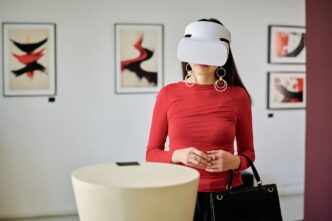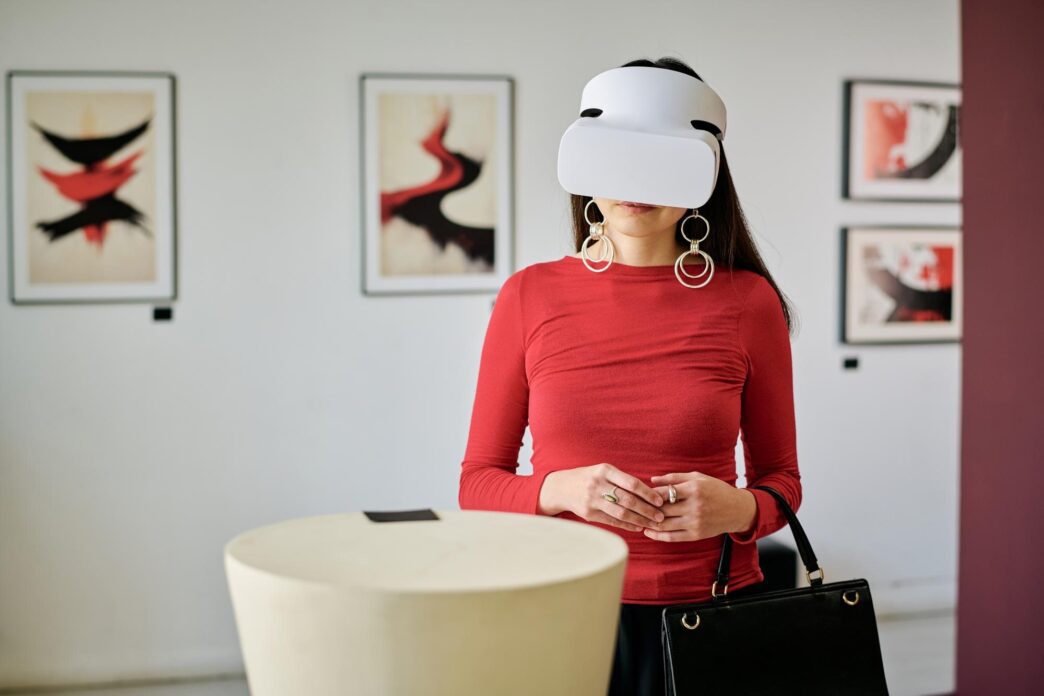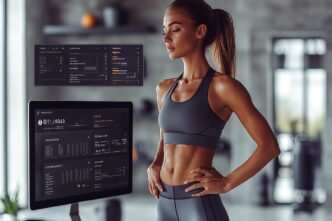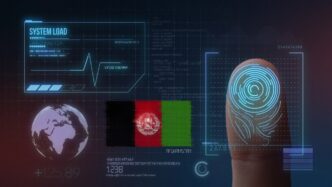Executive Summary
The Trajectory So Far
The Business Implication
Stakeholder Perspectives
Augmented Reality (AR) is rapidly transforming the retail landscape, offering a compelling answer to the question of whether it can boost sales, particularly through the innovative application of virtual try-ons. This technology, which overlays digital information onto the real world, is empowering consumers to virtually experience products before purchase, directly addressing long-standing challenges in both online and brick-and-mortar retail. By enhancing customer engagement, building confidence, and reducing the friction associated with returns, virtual try-ons are proving to be a powerful catalyst for increased conversion rates and a significantly improved customer experience across various industries, from fashion to home decor, right now.
Understanding Virtual Try-On Technology
Virtual Try-On (VTO) technology leverages Augmented Reality to allow users to digitally “try on” products using their smartphone, tablet, or even a smart mirror. This involves superimposing a 3D model of a product onto a live camera feed of the user or their environment.
The core components of VTO include advanced computer vision, 3D modeling, and real-time rendering. Computer vision algorithms detect and track key features of a user’s face, body, or surroundings, ensuring the virtual product is accurately positioned and scaled. High-fidelity 3D models of products are then rendered and integrated seamlessly into the live video stream, creating a highly realistic and interactive experience.
The Retail Challenges VTO Addresses
Traditional retail, especially e-commerce, is plagued by several pain points that VTO is uniquely positioned to solve. One of the biggest challenges is the inability for customers to physically interact with a product before buying it online.
This lack of tactile experience often leads to purchase uncertainty, higher cart abandonment rates, and ultimately, a significant volume of returns. Returns are costly for retailers, impacting profit margins, logistics, and environmental sustainability. For consumers, the return process is inconvenient and frustrating, diminishing their overall satisfaction.
How Virtual Try-Ons Drive Sales Growth
The impact of VTO on a retailer’s bottom line is multi-faceted, primarily by enhancing the customer’s journey and mitigating common retail inefficiencies.
Increasing Conversion Rates
VTO instills greater purchase confidence by allowing customers to visualize how a product will look or fit in their personal context. This reduces hesitancy and the need for guesswork, directly leading to higher conversion rates as shoppers are more assured in their buying decisions.
When a customer can see a pair of glasses on their face, a sofa in their living room, or a lipstick shade on their lips, the perceived risk of a bad purchase diminishes significantly. This immediate gratification and clear visualization translate into fewer abandoned carts and more completed transactions.
Reducing Product Returns
One of the most compelling benefits of VTO is its ability to drastically cut down on product returns. By providing a realistic preview, VTO helps customers make more informed choices upfront, minimizing discrepancies between expectation and reality.
Industries like apparel and eyewear, which historically suffer from high return rates due to fit or aesthetic dissatisfaction, see substantial improvements. Fewer returns mean lower operational costs for retailers, including shipping, restocking, and processing fees.
Elevating the Customer Experience
VTO transforms a passive shopping experience into an interactive and personalized one. It offers convenience, allowing customers to “try on” items from anywhere, at any time, without the need to visit a physical store.
This engaging interaction builds brand loyalty and creates a memorable shopping journey. The novelty and utility of VTO contribute to a positive brand perception, encouraging repeat business and word-of-mouth recommendations.
Differentiating Brands in a Competitive Market
In a crowded digital marketplace, offering VTO capabilities can be a significant competitive differentiator. Brands that adopt this technology are perceived as innovative and customer-centric, setting them apart from competitors.
This technological edge can attract new customers who are seeking modern, convenient, and engaging shopping experiences. It signals a commitment to leveraging cutting-edge solutions for consumer benefit.
Generating Valuable Data Insights
Beyond direct sales, VTO platforms can collect invaluable data on customer preferences and interactions. Retailers can gain insights into which products are being tried on most frequently, common fit issues, and popular styles.
This data can inform product development, inventory management, marketing strategies, and personalized recommendations, leading to more efficient operations and targeted customer outreach.
Key Industries Revolutionized by Virtual Try-Ons
While the concept of VTO is broadly applicable, certain industries have seen particularly profound transformations.
Fashion and Apparel
For clothing and accessories, VTO allows customers to see how garments drape, how colors appear against their skin tone, or how a handbag complements an outfit. This addresses the critical fit and style concerns that often lead to returns in online fashion retail.
Brands are experimenting with full-body try-on solutions, using avatars or real-time body tracking to allow customers to virtually wear entire outfits.
Beauty and Cosmetics
The beauty industry has been an early adopter, with VTO for makeup, hair color, and skincare products. Customers can virtually apply lipstick, eyeshadow, or foundation shades to their live camera feed, seeing the immediate effect.
This eliminates the need for physical testers and allows for hygienic, personalized experimentation, boosting sales of cosmetic products where color matching is crucial.
Eyewear
Trying on glasses or sunglasses virtually has become a standard feature for many optical retailers. VTO accurately superimposes frames onto a customer’s face, allowing them to assess style, size, and fit from multiple angles.
This is particularly effective for an item where face shape and personal style play a huge role in the purchasing decision.
Furniture and Home Decor
AR “see in your space” features allow customers to place virtual furniture, rugs, or decor items into their actual living environment. This helps them visualize how an item will look, fit, and complement their existing decor before making a significant purchase.
It removes the guesswork involved in buying large, expensive items online, significantly reducing buyer’s remorse and returns.
Jewelry
For high-value items like rings, necklaces, and watches, VTO offers a crucial bridge between online browsing and physical experience. Customers can virtually try on pieces, seeing how they sparkle, fit, and appear on their hand or neck.
This enhances confidence in luxury purchases, where the inability to physically inspect an item is a major barrier.
Challenges and Considerations for Implementation
While VTO offers significant advantages, its implementation is not without challenges. Creating high-quality 3D models of products requires specialized expertise and can be resource-intensive.
Ensuring accurate tracking and realistic rendering across a wide range of devices and lighting conditions is also technically demanding. Furthermore, integrating VTO solutions seamlessly into existing e-commerce platforms and maintaining a smooth user experience requires careful planning and execution.
The Future of AR and Virtual Try-Ons in Retail
The trajectory for VTO and AR in retail is one of continuous innovation and deeper integration. Expect to see more sophisticated AR hardware, such as smart glasses, becoming mainstream, offering even more immersive and hands-free try-on experiences.
The convergence of AR with the metaverse will create new virtual shopping environments where avatars can try on digital and physical goods. Hyper-personalization, driven by AI and advanced analytics, will further refine VTO, offering tailored recommendations and experiences unique to each individual shopper.
Augmented Reality, particularly through virtual try-ons, is undeniably a powerful tool for boosting sales and revolutionizing the customer experience in retail. By addressing critical pain points like purchase uncertainty and high return rates, VTO enhances engagement, builds confidence, and drives conversions across diverse product categories. As the technology continues to evolve, its strategic adoption will be essential for retailers aiming to thrive in an increasingly digital and experience-driven marketplace.








